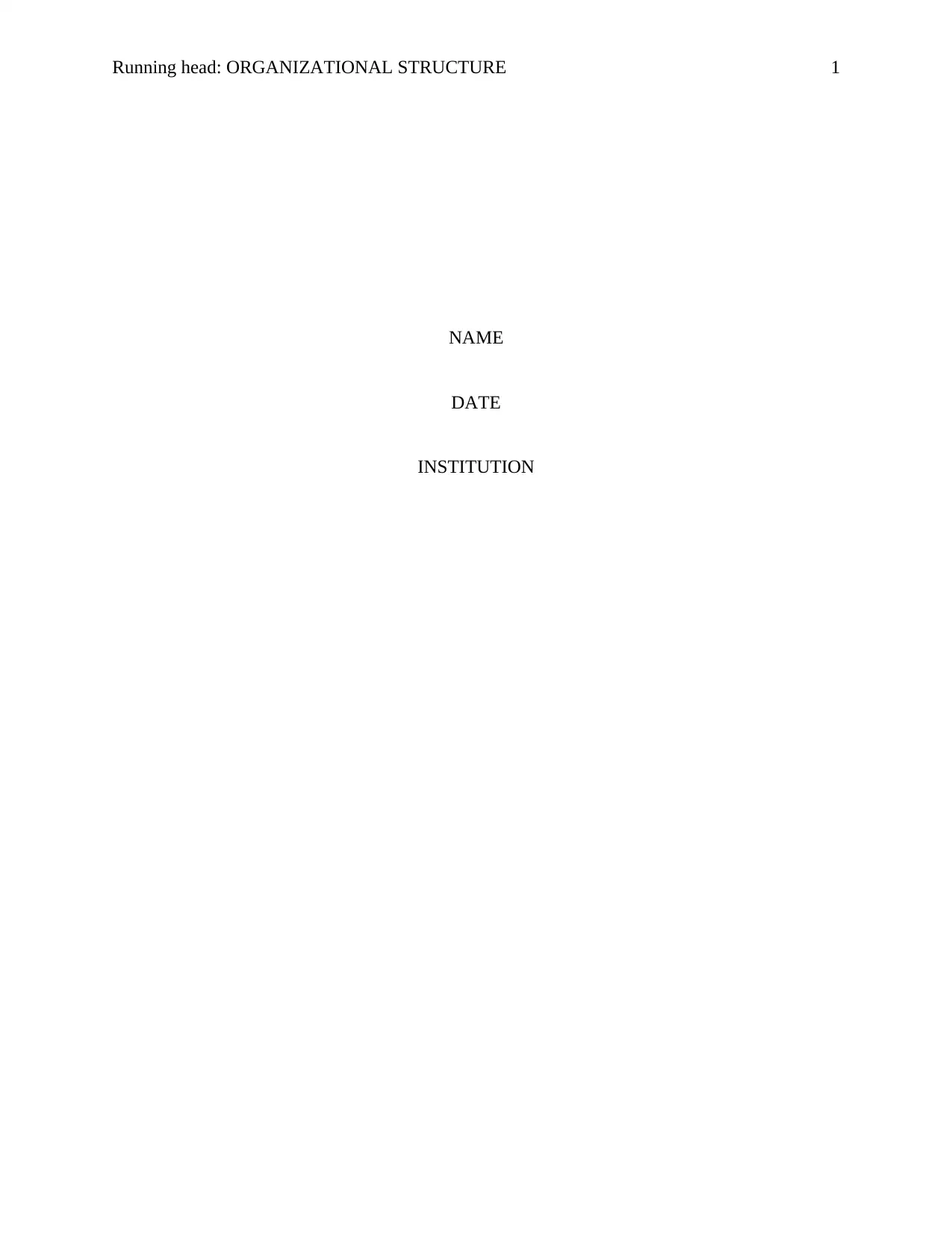Leadership Management: A report on the organizational structure
VerifiedAdded on 2022/10/17
|3
|427
|17
Report
AI Summary
This report examines the impact of organizational structure on leadership, focusing on the specific structure of a healthcare organization. The report analyzes the organizational structure, which is divided into departments such as administration, support services, and others. It highlights the role of the CEO and other leaders in the organization and how they fit into the structure. The report also focuses on the application of the management theories, specifically the principles of Henri Fayol. The report also discusses the importance of teamwork and the efficiency of the structure, and it mentions the importance of management principles for the overall success of the organization. The report concludes by emphasizing the importance of the structure to the overall management and effectiveness of the organization. The report includes the significance of a well-defined structure and its impact on efficiency, communication, and overall organizational success.
1 out of 3










![[object Object]](/_next/static/media/star-bottom.7253800d.svg)